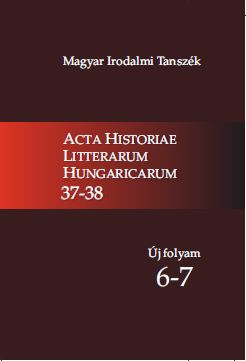The ‘Flȃneur’ as Type and as Analytical Category
Main Article Content
Abstract
The paper aims at an interpretation of the term ‘Flȃneur’. The starting point is to separate three different levels of the use and understanding of the term: a) The flȃneur as a type in the popular metropolitan (first of all, Parisian) literature in the first half of the 19th century. b) The flaneur as artist: the best examples are Baudelaire’s works, like the essay The Painter of Modern Life or the texts of Le Spleen de Paris. c) The Flaneur as analytical category appears in the 20th century in Walter Benjamin’s interpretations and in the tradition connected to Benjamin (authors like Marshall Berman, Richard Sennett, etc.). In this third phase the term ‘flaneur’ plays a significant role in the (social) scientific understanding of cultural modernity. From a historical point of view (connected to the first use mentioned above), this paper tries to give an overview about the literary type/figure of the ‘Parisian flaneur’ and presents the flaneur’s appearance in the Hungarian press of the 19th century. From a more theoretical point of view (connected to the third use), I would like to define the category of flaneur as the expression of a certain way of perception, creation and use of metropolitan (social) spaces. The theoretical context of my approach is based on the Benjaminian tradition and on writings by authors like Michel Foucault and Michel de Certeau.

